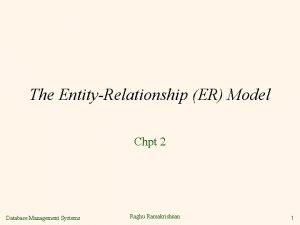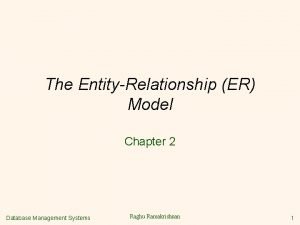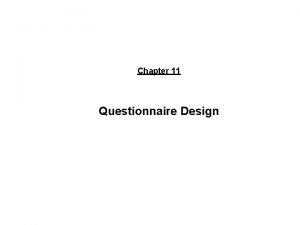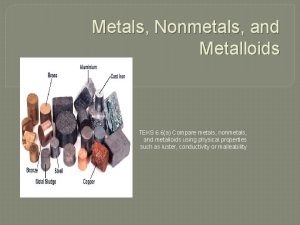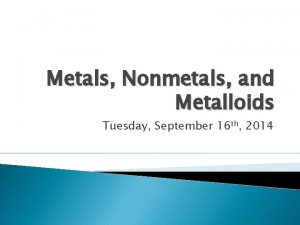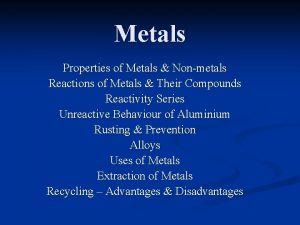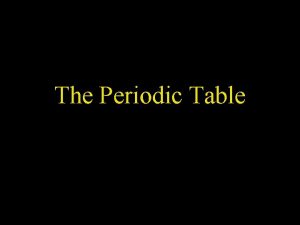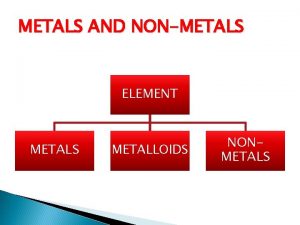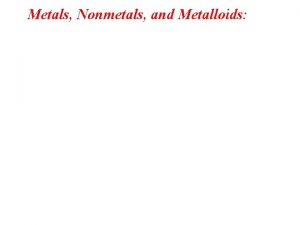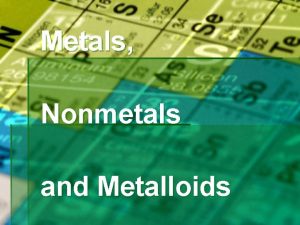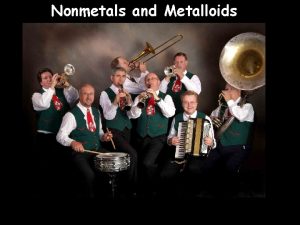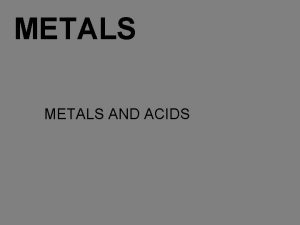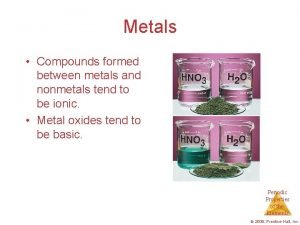AP Chemistry Chpt 7 Metals nonmetals reactions Metals









- Slides: 9

AP Chemistry Chpt 7 Metals, nonmetals & reactions

Metals • Found in lower left side of the periodic table • Electrically conductive • Shiny, Reflective • Form positive ions

Reactions with metals • The coinage metals resist direct reaction with oxygen, though even those metals can form metal oxides when reacted with stronger oxidizing agents. • Most metals react more easily with oxygen to form metal oxides • Sodium, and the elements beneath it are so reactive, they form superoxides with oxygen

Predict the products of the following metals with oxygen. If there is more than one possible product, write balanced reactions for both. Then predict which product will be favored when oxygen is non-limiting. • • Silver + oxygen Iron + oxygen Lithium + oxygen Potassium + oxygen

Metal oxides with water • Form basic solutions (usually) • Example: – Ca. O + H 2 O Ca(OH)2 • Or amphoteric solutions – Al 2 O 3 + 3 H 2 O 2 Al(OH)3

Non-metal oxides in water • Form acidic solutions • Examples: – CO 2 + H 2 O H 2 CO 3 – SO 2 + H 2 O H 2 SO 3

Metal hydrides • Alkali metals are so reactive, they can react directly with hydrogen to form metal hydrides – 2 M + H 2 2 MH • Hydrides of other metals are possible, but are typically only produced when the hydrogen is under much higher pressure.

Metal hydrides are extremely reactive • These react with water to produce hydrogen gas, and a metal hydroxide

Predict the product: • Potassium is added to hydrogen • The product of the above reaction is added to water. • Nitrogen dioxide reacts with water to produce two different soluble products – Is this solution acidic or basic? • Magnesium is combusted in oxygen, then the product is dissolved in water. – Is this solution acidic or basic?

